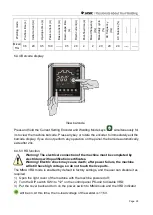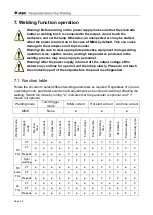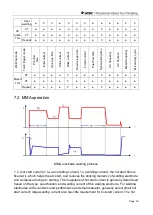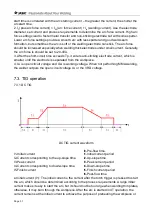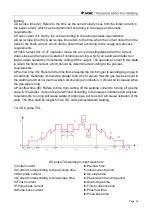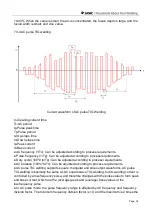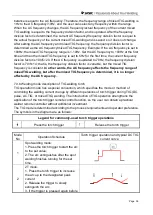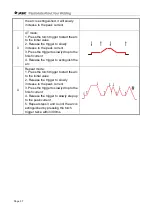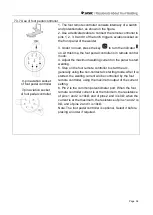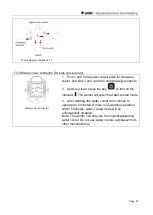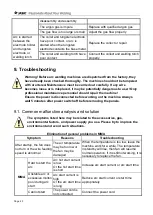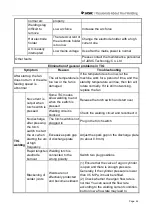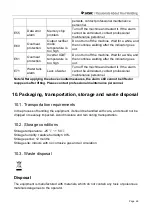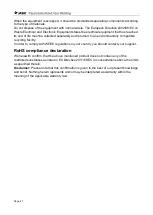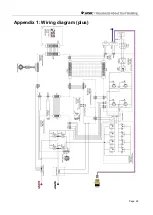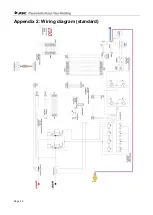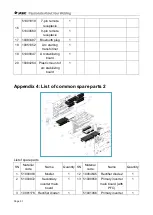
Page 42
parts of the torch should have spares, including the collet, nozzle, sealing mesh, insulating
washer, etc. Common faults of the welding torch include overheating, gas leakage, water
leakage, poor gas protection, power leakage, nozzle burn out, and cracking. The causes of
these faults and troubleshooting methods are as shown in the following table:
Symptom
Reasons
Troubleshooting
The welding
torch is
overheated
The welding torch capacity is too
small
Replace with a welding torch with
one with large capacity
The cooling water pipe is blocked,
resulting in blockage or low
cooling water flow
Blow the cooling pipe with
compressed air to clear the blockage
The collet fails to clamp the
tungsten electrode
Replace the collet or electrode cap
Water leakage
The sealing ring is aged
Replace the sealing ring
The water pipe joint is damaged
or not fastened
Reconnect the water pipe and tighten
it
The weld between the welding
torch and the water inlet pipe is
leaking
Open it to repair the welding
Air leakage
The sealing ring has aged
Replace the sealing ring
The connecting thread is loose
Tighten it
The gas inlet pipe joint is
damaged or not fastened
Cut off the damaged joint, reconnect
and tighten the replaced gas intake
pipe or reliably wrap the damaged
area
The gas inlet pipe has been
damaged by heat or aging
Replace the gas inlet pipe
Electric leakage
The torch head is wet due to
leakage or other reasons
Find the cause of water leakage, and
fully dry the electrode holder
The torch head is damaged or the
live metal part is exposed
Replace the torch head or wrap the
exposed electrified metal part with
adhesive tape
Poor gas
protection
The welding torch is leaking
Eliminate the leakage
The nozzle diameter is too small
Replace with a nozzle of larger
diameter
The nozzle is damaged or
cracked
Replace with a new nozzle
The gas circuit in the welding
torch is blocked
Blow the circuit with compressed air
to clear the blockage
The gas screen has been
damaged or lost during
Replace with a new gas screen

